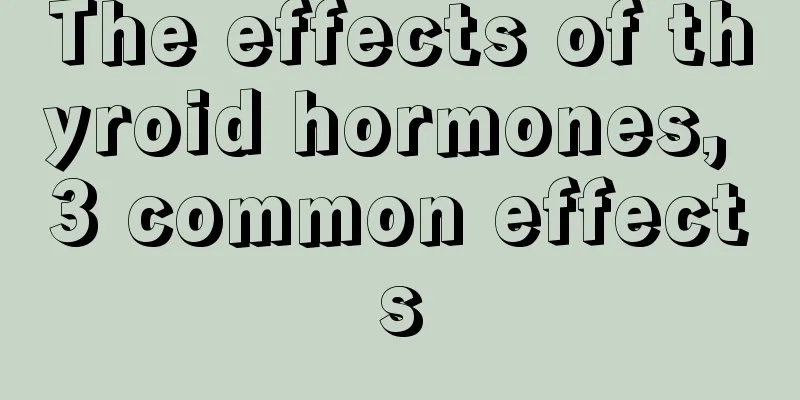Can cauda equina injury be recovered?

|
The human body has many nervous systems, and damage to any one of them will have corresponding effects on the body. Among them, the cauda equina may be the most familiar to everyone. It is the area with spinal nerve bundles from the lumbar spine to the coccyx. Sometimes, if you sit in the wrong way or use too much force, this area will be injured. But can cauda equina injury be recovered? How to treat after injury? This issue is of great concern to everyone. Here is a brief introduction. There is a spinal nerve bundle from the waist to the tail, which looks like a horse's tail, so it is called the cauda equina. Cauda equina damage is relatively common in clinical practice. Most of the time, it is due to various congenital or acquired reasons that lead to absolute or relative stenosis of the lumbar spinal canal, compressing the cauda equina and causing a series of neurological dysfunctions. treat The best treatment for cauda equina syndrome (CES) is surgery. The principle is early diagnosis, early surgery, and emergency surgery when necessary. The purpose of surgery is to relieve pressure and loosen adhesions. Surgical method: 1. Laminectomy and decompression: Its purpose is to expand the spinal canal to achieve decompression effect. Suitable for fractures or fracture-dislocations. The decompression range should be sufficient to completely remove the compressive object in the compressed area or be centered on the dislocated segment, not exceeding the lamina of one vertebra above or below. 2. Anterior decompression or internal fixation: It is mainly used to remove compressive objects from the front of the spinal cord. It has a direct decompression effect and can be given different methods of internal fixation to enhance stability. Artificial vertebrae can also be used to replace fractured or diseased vertebrae to restore the original height. 3. Cauda equina anastomosis: (1) Proximal cauda equina anastomosis: The first and second lumbar cauda equina nerves have not yet dispersed, so the nerve roots are aggregated and the injured cauda equina is disordered. The site of injury can be clearly identified. After diagnosis, the incision is wrapped with brain cotton to protect the surrounding tissues, and the blood and blood clots are repeatedly flushed with saline. Then, microsurgery is used to suture the cauda equina carefully according to its thickness, and only one or two stitches are needed to suture the perineurium. (2) Distal cauda equina anastomosis: according to the anatomical characteristics of the cauda equina, the motor nerves of the cauda equina below L3 gradually move toward the ventral side, while the sensory nerves are distributed on the dorsal side. In order to preserve the function of the lower limbs, its motor nerves, namely the ventral roots, are matched as much as possible. The cauda equina has no epineurium but has perineurium, so it is somewhat difficult to sew. 4. Cauda equina release: It is suitable for patients with CES caused by chronic injury resulting in adhesion of cauda equina. The operation must be performed under microsurgical techniques. Factors that affect the efficacy of surgery include: (1) Long-term compression of the cauda equina and nerve roots without timely decompression can lead to secondary arachnoiditis, cauda equina paralysis and intractable low back and leg pain. Therefore, early surgical treatment is necessary. If early surgery is not possible, the cauda equina should be explored during surgery, and cauda equina release should be performed if adhesions are present. (2) Improper surgical procedure selection destroys spinal stability, resulting in iatrogenic lumbar instability, spondylolisthesis, and spinal stenosis. Therefore, fenestration decompression surgery should be adopted as much as possible. (3) The surgeon is unskilled, moves roughly, and does not clearly understand the anatomical layers, which further damages the cauda equina nerve. (4) Incomplete discectomy or missed diagnosis and mistreatment. (5) Lumbar spinal stenosis is a pathological basis for CES, and incomplete decompression may lead to surgical failure. Therefore, attention should be paid to the expansion and decompression of the central canal and nerve root canal during surgery. (6) Angiography can increase damage to the cauda equina nerve. Careful operation and selection of contrast agents are required during angiography. (7) Postoperative re-adhesion and scar tissue compression are important reasons for surgical ineffectiveness or aggravation of symptoms. There are many studies on CES, but its pathogenesis is still not fully understood, and the treatment effect of severe CES is not optimistic. In order to improve the clinical cure rate, further work needs to be done: 1. Make full use of the development of basic medical technologies such as molecular biology to further explore the pathogenesis of CES; 2. Improve surgical accuracy, accurately select surgical methods, apply microsurgical techniques, accurately position, fully decompress, prevent adhesion and postoperative scar tissue from re-compressing the cauda equina, and reduce re-injury. |
<<: There is a black vertical stripe on the thumb nail
>>: How to recover after being injured by dishwashing liquid
Recommend
Is advanced lung cancer contagious? You should know the following about the contagiousness of lung cancer
Nowadays, more and more diseases are endangering ...
Can a father's children inherit gallbladder cancer?
Some patients with gallbladder cancer and their f...
Is it expensive to drain the abdominal fluid for pancreatic cancer?
Pancreatic cancer is known as the "king of c...
Elbow acupuncture points
As we all know, Chinese medicine is extensive and...
Ask about tongue cancer diagnostic tools
Relevant oral experts said that tongue cancer is ...
Differential diagnosis of ovarian tumors
The occurrence of ovarian malignant tumors has a ...
Dry your nose before applying the mask
Nowadays, after washing their faces every day, ma...
What are the nursing measures for brain hernia?
If brain hernia is not treated in time, it will d...
What causes difficulty breathing during exercise
Many people like to exercise, not only because it...
Can you die if you take too much motion sickness medicine?
Many people usually experience motion sickness wh...
How to choose treatment drugs for endometrial cancer
How to choose the treatment drugs for endometrial...
What are the nursing measures for patients with heart failure
When it comes to the nursing work of heart failur...
How to kill scabies and remove them from the skin?
Scabies is a parasite that grows on human skin. T...
What medicine is the best for pancreatic cancer pain relief?
Currently, the analgesic effect of pancreatic can...
Genetic yellow skin
Although we are all yellow people, our skin is no...









